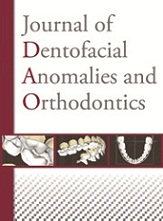Article contents
The use of geometric morphometry to study facial asymmetries: relationship between basicranial shape and maxillofacial and occlusal pathologies
Published online by Cambridge University Press: 24 October 2013
Abstract
Describing an anatomical shape with a landmark points diagram allows the practitioner to use all the tools of geometric morphometry. Using a 14 point trigeminal for maxillofacial morphology, 10 points for basicranial morphology and 6 points for the orbital area, we have been able to identify the specific maxillofacial shapes associated with the major dysplasias (Class II or Class III ‘‘surgical limit’’) or simple malocclusions and to research the possible relationships between basicranial morphologies and maxillofacial morphologies. The asymmetries have thus been linked to other pathologies.
We have compared these results with those obtained by using a three-dimensional cephalometric analysis and with results obtained from the literature.
The conclusions on the epidemiology of the asymmetries are in agreement. Basically, the mandible with dominance of the right hemi-face was confirmed as the causative factor. The stability of the basicranial shape makes a solid case that it is not responsible for maxillofacial or occlusal pathologies.
Keywords
Information
- Type
- Article
- Information
- Copyright
- © RODF / EDP Sciences
- 1
- Cited by

